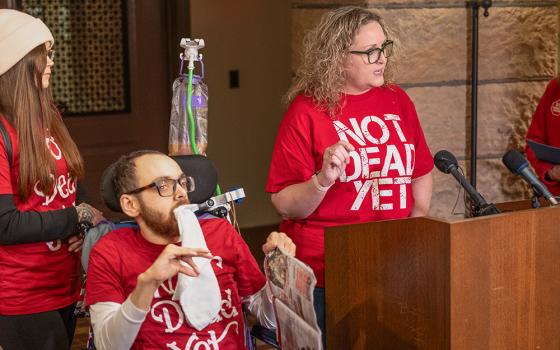This week's column offers some concluding reflections on Sister Sandra Schneiders' exceedingly important four-page article, The past and future of ministerial religious life , in the Oct 2 issue of the National Catholic Reporter.
Schneiders has been for many years associated with the Jesuit School of Theology in Berkeley, California, as professor of New Testament Studies and Christian Spirituality, and is a member of the Sisters, Servants of the Immaculate Heart of Mary of Monroe, Michigan, often identified simply as the IHMs.
Her article is required reading for anyone concerned, on one side or the other, about the Vatican's "visitation" of U.S. religious communities of women or the Congregation for the Doctrine of the Faith's "doctrinal assessment" of the Leadership Conference of Women Religious, more commonly known as the LCWR.
Schneiders points out that there are two kinds of religious life: the monastic, which emphasizes habit, enclosure, and horarium (a daily schedule that includes shared meals, work, and prayer), and the ministerial, which subordinates (not necessarily eliminates) all three to the service of others.
Too many Catholics, including some who hold high-ranking ecclesiastical office, assume that there is only one kind of authentic religious life, namely, the monastic. This is why they place such emphasis on some distinctive religious habit, or dress, on living and praying in community, and on following a regular schedule in the convent.
The situation in religious life has changed, however, not just in the past few decades, but for the past four centuries. It is only recently that these changes have been noticed, and some Catholics are disturbed by them.
Unfortunately, some of those who have been most critical of the changes in religious life, from the monastic to the ministerial, are unaware of the biblical and historical foundations for these changes.
The pre-Easter Jesus, Schneiders points out in her article, had many kinds of disciples. Some, like Martha, Mary, and Lazarus of Bethany (Luke 10:38-42; John 11:5) were householders who followed Jesus within the context of family life.
Others, like Zacchaeus (Luke 19:2-9) or the royal official in John 4:46-54, followed him by just and generous involvement in secular occupations.
"But there was one rather small group of women and men (Luke 8:1-3) whom Jesus called to abandon everything ... to be in his company on a 24/7 basis, to take on in real time his itinerant form of life, to participate in his daily full-time ministry of announcing the Gospel in word and deed ..., and after the Resurrection to continue, full-time, his lifestyle and ministry even unto the laying down of their lives. ..."
Some members of this small itinerant group included Mary Magdalene, Simon Peter, Susanna, James and John, and later people like Paul and Barnabas.
"This is the group, the form of discipleship" Schneiders writes, "that supplies the primary biblical model for ministerial religious life."
Jesus did not call many to this form of discipleship, of which there were and are many forms, and no one of which is superior to any other.
Jesus celebrated with his itinerant band of disciples, but also with other friends outside this group. "In short," Schneiders observes, "Jesus' personal choice was a mixed life of prayer, both communal and solitary, and intense ministerial action in the public sphere ... to women and men equally."
"Jesus" she points out, "was an itinerant minister. He was not a member of a monastic community...." He did not wear distinctive clothing, had no fixed residence, and did not follow a pre-determined daily routine of work and prayer.
"Anyone examining the life of ministerial religious women in the United States today," she writes, "should have no difficulty recognizing their choice of and commitment to the pattern of life to which Jesus called his original band of itinerant disciples."
These women, she continues, are "deeply committed to the egalitarian, nonauthoritarian, collegial exercise of authority and practice of obedience that Jesus inaugurated among his original band," but unfortunately this is not the style of leadership that characterizes much of the Church today.
Despite many negative developments, such as the "visitation" of religious communities of women and the "doctrinal assessment" of the LCWR, "religious know what they are called to, [and] what they are trying to live. While it may not always be clear how to do it, most are quite clear that denaturing their life is not the answer."
Jesus promised his special disciples a "hundredfold in this life, persecution, and finally eternal life (Mark 10:29-30)."
His promise shall certainly be fulfilled, no matter how many obstacles are placed in its way, even within the church itself.
© 2009 Richard P. McBrien. All rights reserved. Fr. McBrien is the Crowley-O'Brien Professor of Theology at the University of Notre Dame.




